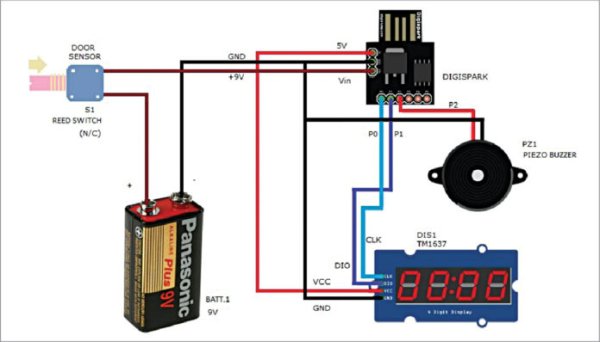

You module might have lesser, but don’t worry it will still have the following for sure The 7-segment module has 16 pins as shown below. Let us see how, how we can connect this 4-digit 7-segment module with our Raspberry Pi. Simply we can select which display has to go active using the pins from D0 to D3 and what character to be display using the pins from A to DP.Ĭonnecting 4-digit 7-segment module with Raspberry Pi: For example: If I need my output to be present only on the second display then only D1 should be made high while keeping other pins (D0, D2, and D3) as low.

We have additional four pins from D0 to D3 (D0, D1, D2 and D3) which can be used to control which display out of the four should go high. So, basically if trigger A on, then all four A's should go high right?īut, that does not happen. To understand how 4-digit seven segment module works we have to look into the above schematics, as shown the A pins of all four display is connected to gather as one A and the same for B,C. The connection schematic for the same is shown below: We know that each 7-segment module will have 10 pins and for 4 seven segment displays there would be 40 pins in total and it would be hectic for anyone to solder them on a dot board, so I would highly recommend anyone to buy a module or make your own PCB for using a 4-digit 7-segment display. So, in this tutorial we will be using a 4-digit 7-Segment Display Module as shown below.Īs we can see there are Four Seven Segment Displays connected together. But, it is pretty evident that we would need more than one 7-segment display to convey any information that is more than one digit.
TM1637 PROTEUS LIBRARY HOW TO
Now we know how to display our desired numeric character on a single 7-segment display.

There are two types of 7-segment displays: Common Cathode and Common Anode, here we are using Common Cathode seven segment display. Like if you want the 7-segment to display the number "5" then you need to glow segment a,f,g,c, and d by making their corresponding pins high. So, let us start knowing it.ħ-Segment and 4-Digit 7-Segment Display Module:ħ Segment Display has seven segments in it and each segment has one LED inside it to display the numbers by lighting up the corresponding segments. 7-segments also have the advantage against poor lighting condition and can be viewed from lager angles than a normal LCD screen. LCD suffers from the drawback of having low character size and will be overkill for your project if you are just planning to display some numeric values. Today we will Interface 4-digit Seven Segment Display Module with Raspberry Pi and display Time over it.Īlthough 16x2 Alphanumeric LCD is much more comfortable than 7-segment display, there are few scenarios where a 7-segment display would come in handier than a LCD display. We have already learnt how to use a Alphanumeric LCD and a single segment 7-segment display with Raspberry pi. This is where we prefer to use 16x2 Alphanumeric LCD display or the 7-Segment display. But, it would always be not economical to use a LCD screen with PI for displaying small amount of data. There are many sensors which can detect certain parameters from the real time world and transfer it to a digital world and we analyse them viewing them either in a LCD screen or some other display. All this can be possible only if we know how to make it interact with the real world and analyse the data through some output device. With its high computational power it can work out wonders in hands of electronics hobbyists or students.

We all know that Raspberry Pi is a wonderful Development platform based on ARM microprocessor.


 0 kommentar(er)
0 kommentar(er)
